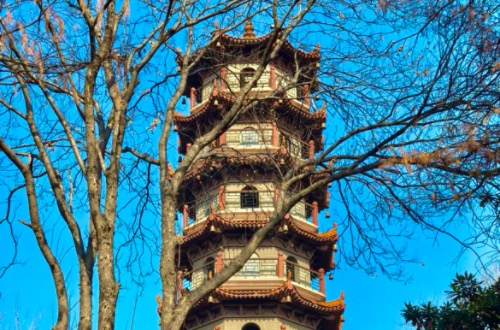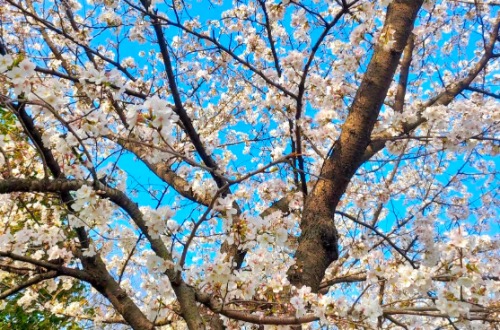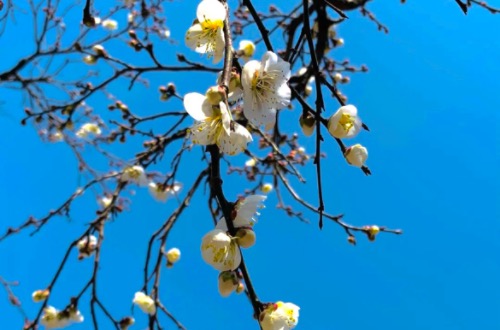Jiefang Park

Wuhan Jiefang Park is a large-scale park located on Jiefang Avenue, Jiang'an District, Wuhan City, Hubei Province. It was completed and opened on May 16, 1955 (the sixth anniversary of the liberation of Wuhan), thus getting its name.
The total area of the park is 460,000 square meters, with a land area of 360,000 square meters and a water area of 100,000 square meters. There is a rich variety of plants in the park, with more than 410 species, and the green space rate is as high as 85%. The overall style of the park belongs to modern garden. Initially, it was laid out in a Western formal style, and later gradually shifted to the Chinese-style garden style of "imitating nature".
- Chinese name: 解放公园 Jiěfàng Gōngyuán
- Suggested time: 1-2 hours
- Ticket: Free
- Open hours: 6:00-22:00
- The best time to visit: All year round
- Address: No. 42, Jiefang Avenue, Jiang'an District, Wuhan, Hubei, China
- How to get there: Take Metro Line 2 or Line 7 to Jiyuqiao Station, then walk or take a short taxi ride
Highlights of Jiefang Park
The Chinese Famous Pagoda Garden
 The Chinese Famous Pagoda Garden
The Chinese Famous Pagoda GardenIn the early 1990s, Wuhan Jiefang Park built a grand “The Chinese Famous Pagoda Garden” on an area of nearly 20 mu on its central island.
The Famous Pagoda Garden is located on the central island of Jiefang Park. Surrounded by water, it is lush with trees, offering a quiet and serene environment, covering an area of 20 mu. Construction started in November 1991, and the “Bueyue Pagoda” was completed the following year. This pagoda is modeled after the Qing-style architecture. It has seven stories and is octagonal in shape, 26 meters high. Inside, there is a spiral staircase, allowing people to climb up and enjoy the distant view.
Around the main pagoda, 50 world - famous pagodas are installed. The corridor along the island in the pagoda garden is over 300 meters long. The Yongcui Bridge and the waterside pavilion, which shine in harmony with the pagoda, add a sense of antiquity to this modern garden.
Cherry Blossom Corridor
 Cherry Blossom
Cherry BlossomThe cherry blossom varieties in Jiefang Park mainly include early-blooming and late-blooming cherry blossoms, with approximately more than 400 trees in the whole park. Every year, when the cherry blossoms are in full bloom, they are set off against the small bridges and flowing water, presenting a breathtakingly beautiful scene.
The most concentrated area for enjoying cherry blossoms in the park is the region stretching from the Cherry Blossom Slope at Gate No.1 to the area of the Eight Horses and the Wetland Lake. Centered around the wetland, there are patches of cherry blossom forests planted beside the small arc-shaped slopes and near the Orchid Exhibition area. Walking along the pebble-paved path, sunlight filters through the trees like a waterfall of light, and the gentle breeze passes through the branches, feeling like wisps of gossamer. You may as well stand under the cherry blossom trees and quietly enjoy the feeling of being surrounded by a sea of blossoms. Meihua Mountain is very close to the Cherry Blossom Slope. Next to the cherry blossoms, there are some Gongfen plum blossoms, Lü'e plum blossoms, and fragrant wintersweet flowers.
After enjoying the sea of cherry blossoms, there is also the Cherry Blossom Corridor in the park. On both sides of the Hanqiu Bridge Road managed by the Jiefang Park Administrative Office, Japanese late-blooming cherry blossoms are planted, interspersed among the dawn redwood trees. When the flowering season arrives, the wind blows up the pink petals, and the path will then form a cherry blossom corridor.
Air Force Martyrs' Cemetery
It is the burial place of 15 internationalist fighters from the Soviet Volunteer Air Force who heroically sacrificed their lives to support the Chinese people during the Anti - Japanese War. Originally located in the Wanguo Cemetery on Chen Huaimin Road, Zhongshan Avenue, it was relocated here in 1956. The cemetery is nestled against Chaomei Ridge on the left and Xi Gui Mountain on the right, covering an area of over 10,000 square meters.
Meihua Mountain
 Meihua
MeihuaIt is very close to the Cherry Blossom Slope. There are Gongfen plum blossoms, Lü'e plum blossoms, and fragrant wintersweet flowers, etc. Throughout the year, it presents different sceneries and hosts various flower exhibitions. The middle-late February of each year is a good season to visit the flower exhibitions, which usually last about one month. Xiaochunxuan Pavilion, Luhua Terrace, Yiting Pavilion and Shoushi Pavilion are all great places to view the flower exhibitions.
Drop us a line and we'll connect you with the top China expert in no time!